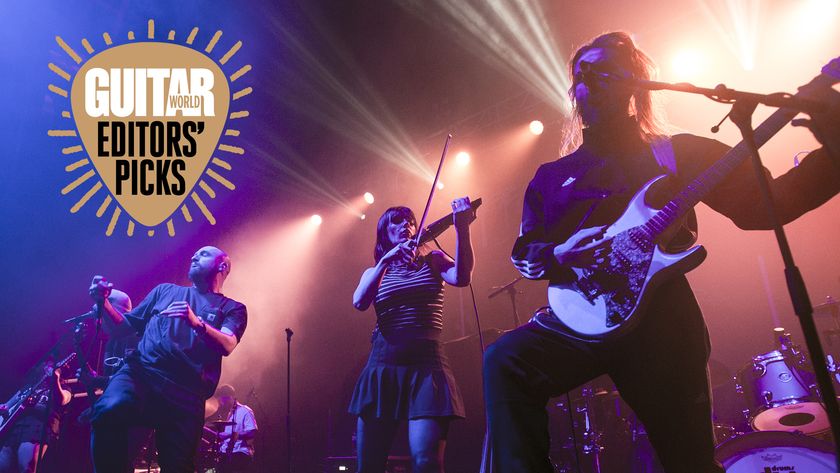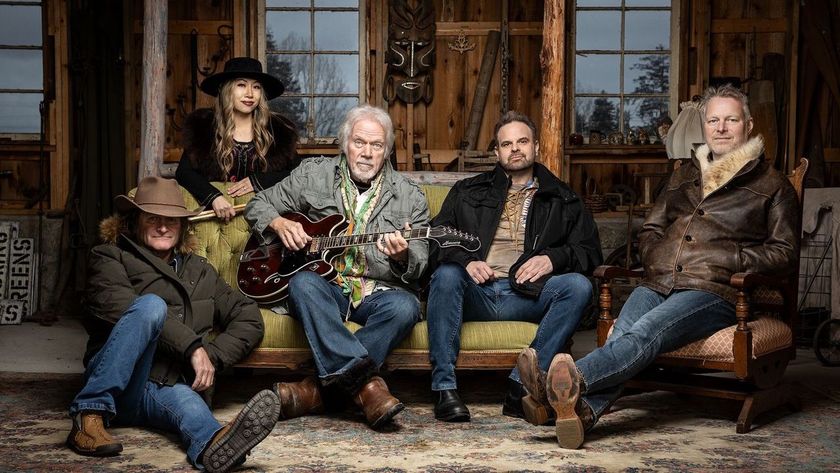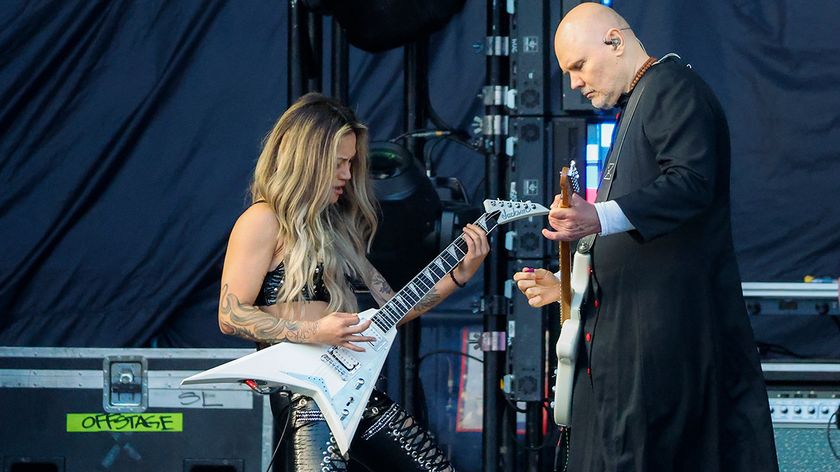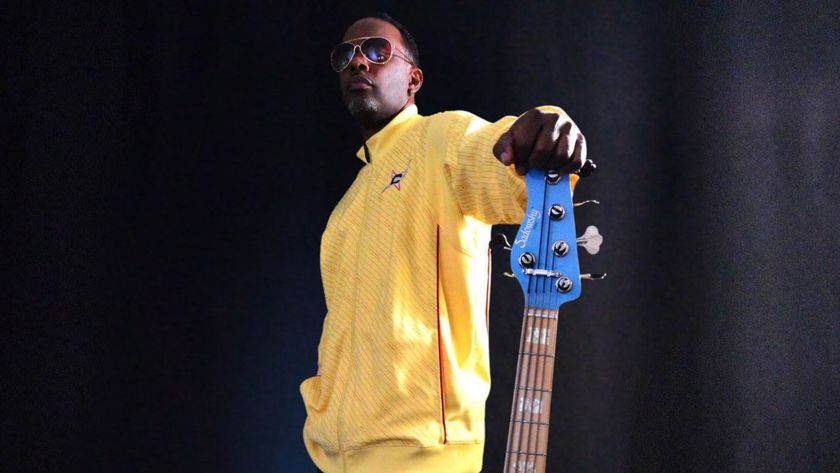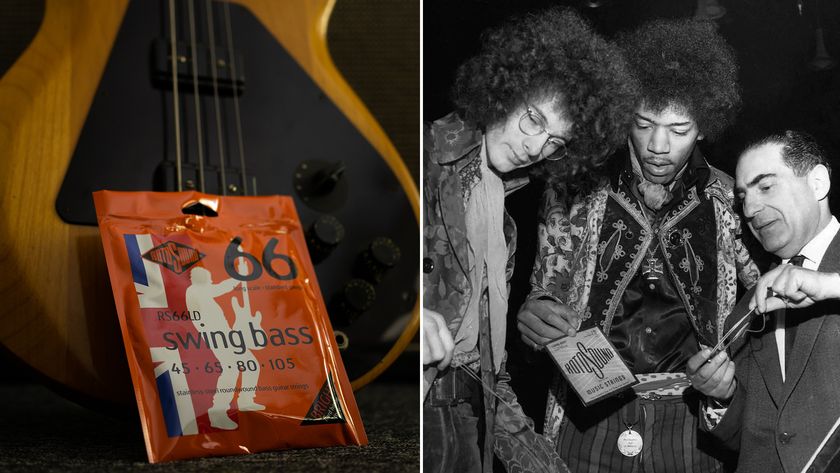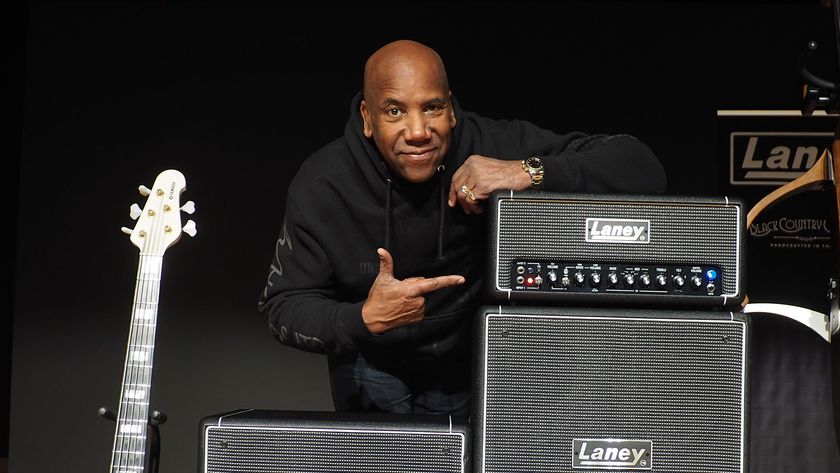Shihad’s Phil Knight: “We wanted to do a heavier album”
Lead shredder Phil Knight tells us how the band tapped into their savage side for Old Gods, and why they wanted to capture the raw, visceral intensity of their live show

If you’re lucky enough to have had the unique privilege of watching Shihad perform live, you’ll know it’s an experience unlike any other. The raw, visceral passion with which the Kiwi rockers translate their tight, cerebral musicality – it’s like watching Hollywood’s version of the perfect metal gig, where it sounds intense and chaotic, but the performance itself isn’t a beat off-step.
Shihad have always been a band whose live energy is palpable on record – at least in the case of the first stack of records – but with album ten, Old Gods, they’ve gone beyond just capturing that energy. Here, we see Shihad in their rawest, most authentic form. It’s bare-bones, balls-to-the-wall volatility – four guys and their instruments, and a whole lot of pent-up rage to thrash out.
But not only is Old Gods the heaviest and most rugged Shihad LP in recent memory, it’s also their most striking on a thematic wavelength. In the seven years since they released the FVEY album, the band have gone through a veritable lifetime of growth, both in musicality and in person. Particularly so for singer‑shredder Jon Toogood, whose eyes have opened wider than ever to the worlds of oppression and inequity.
Before the band unleash Old Gods unto the world at the end of August, we got down to the wire with lead guitarist Phil Knight to find out how this crushing collection of ruminations and riffs came together.
I wanted to bring up a quote from Jon, where he said: “I don’t think FVEY even compares with the anger I feel now with what’s going on.” As a band, how did you go about encapsulating that anger and translating that raw, visceral emotion into music?
I think the stuff that came out in the rehearsal room, where we were just jamming the riffs and working out the instrumentals, it was just naturally heavier. And I guess when we were selecting the songs we wanted to work on, we just decided we wanted to do a heavier album. Then through the way we recorded the album, sonically, it just turned out to be more heavy and in-your-face than the last one.
But the narrative of the lyrics, from Jon, that’s probably one of the main aspects that really made the heaviness come across with a lot more anger. We were living through the Trump years when he was writing all of that stuff, and then there was all that crap going down in the States with Black people getting shot by the police… I know that had an effect on Jon because he’s got relatives over there, and his kids are biracial.
I know for a fact that he’s been present when his wife has endured some racist incidents – even just at the traffic lights, from people in the cars next to them. I think all of that has had quite an effect on him, y’know? He’s got biracial kids and he’s looking at the world they’re going to grow up in. I know he’s been quite lucky as a middle-class white male, but I guess he’s looking at things from a slightly different perspective now because of his family.
Get The Pick Newsletter
All the latest guitar news, interviews, lessons, reviews, deals and more, direct to your inbox!
For yourself as a guitarist, were you excited to really crank it up to 11 on this record?
Yeah, totally! I guess I’m not so much of a shredder these days, but we went up into the studio, [producer] Adam Spark was like, “Give me some albums that would show me a sonic reference point for the direction you want to go in,” and Evil Empire by Rage Against The Machine was one that we were all pointing at. That had a big influence on us – the sound and the message, but mostly the sound.
We wanted something huge, but also very natural sounding, so we decided to go for an approach that involved less guitar overdubs. We wanted that Malcolm and Angus feel as well – y’know, we’re huge AC/DC fans – so for most of the album, apart from some of the overdubs you can clearly pick up, it’s Jon on the left speaker and me on the right, both of us playing in the room, with Karl [Kippenberger, bass] down the middle.
it’s very band-in-the-room – especially compared to an album like FVEY, or even going back to General Electric, where there were a lot of overdubs and it was very produced. This is a bit more like that early AC/DC stuff where you can really pick out the four people and what they’re playing.
Do you find that capturing your live sound in the studio helps to get the intensity and heaviness behind the song itself across?
Totally. It certainly helps to get the personally across. I mean, I won’t name them, but we’ve had albums over the years where, y’know, people have heard the songs on the record and then they’ve heard them live, and they’ve gone, “Oh, this isn’t the same song!” Y’know, you always want to capture that live energy on the album, not the other way around. We had a couple of fails there, where the energy and the personality – the musicianship – just didn’t really translate onto the recording.
We’ve always talked about having an album that just really captured what we sound like when we’re playing live. I mean, we did the Pacifier: Live album in 2003, and that delivers it to a certain extent – but y’know, I think we’ve done a really good job of doing an original studio album with that sort of Rage Against The Machine, AC/DC, band-in-the-room sound [with Old Gods].
What guitars were you tearing shit up on for this record?
We actually ended up leaving most of our gear in New Zealand. Jon left a guitar behind that he probably should have used on the album – a ’59 Fender Tele Original – and instead for most of his overdubs and rhythm playing, he used Adam Sparks’ ’77 Tele. Apart from that, we borrowed a ’59 Tele from our guitar tech, and that’s famously what Jon uses live for the low-tuned stuff.
And then for the odd bit here and there, he used this guitar that he’d been gifted in New Zealand; it was like a Tele – it looks like a ’59 Tele – but it’s made out of swamp kauri wood. It’s a native New Zealand wood, and [the body piece] would have been thousands of years old. A guy in New Zealand just came up to Jon after a show and said, “I made this for you.” It’s actually got a musket bullet lodged in the wood, from the colonial Maori wars. That’s a pretty good sounding guitar!
I’ve got an older Jazzmaster that I like to play live, but during the recording, we got some more guitars from Fender. I got three more Jazzmasters – a Jazzmaster Pro II, a Vintera Jazzmaster and a plain Jazzmaster. For all of Jon’s tracking, he used an Orange AD30 head into a Marshall BX quad, into 25-watt Greenbacks. And then for most of my rhythm overdubs, I used my ’79 Gibson Les Paul Standard into Adam’s Diezel VH4, into the same Marshall BX quad.
We made a point of not blending amplifiers, because we found when we’d done it in the past that you can get phasing issues when you blend various amps and speakers. So we just tried to keep it as simple as possible, like we’d be playing live or jamming out – one head, one quad, a couple of mics on the speaker, and that’s it. And I think that worked out really well – we got some fat tones!

Ellie Robinson is an Australian writer, editor and dog enthusiast with a keen ear for pop-rock and a keen tongue for actual Pop Rocks. Her bylines include music rag staples like NME, BLUNT, Mixdown and, of course, Australian Guitar (where she also serves as Editor-at-Large), but also less expected fare like TV Soap and Snowboarding Australia. Her go-to guitar is a Fender Player Tele, which, controversially, she only picked up after she'd joined the team at Australian Guitar. Before then, Ellie was a keyboardist – thankfully, the AG crew helped her see the light…

